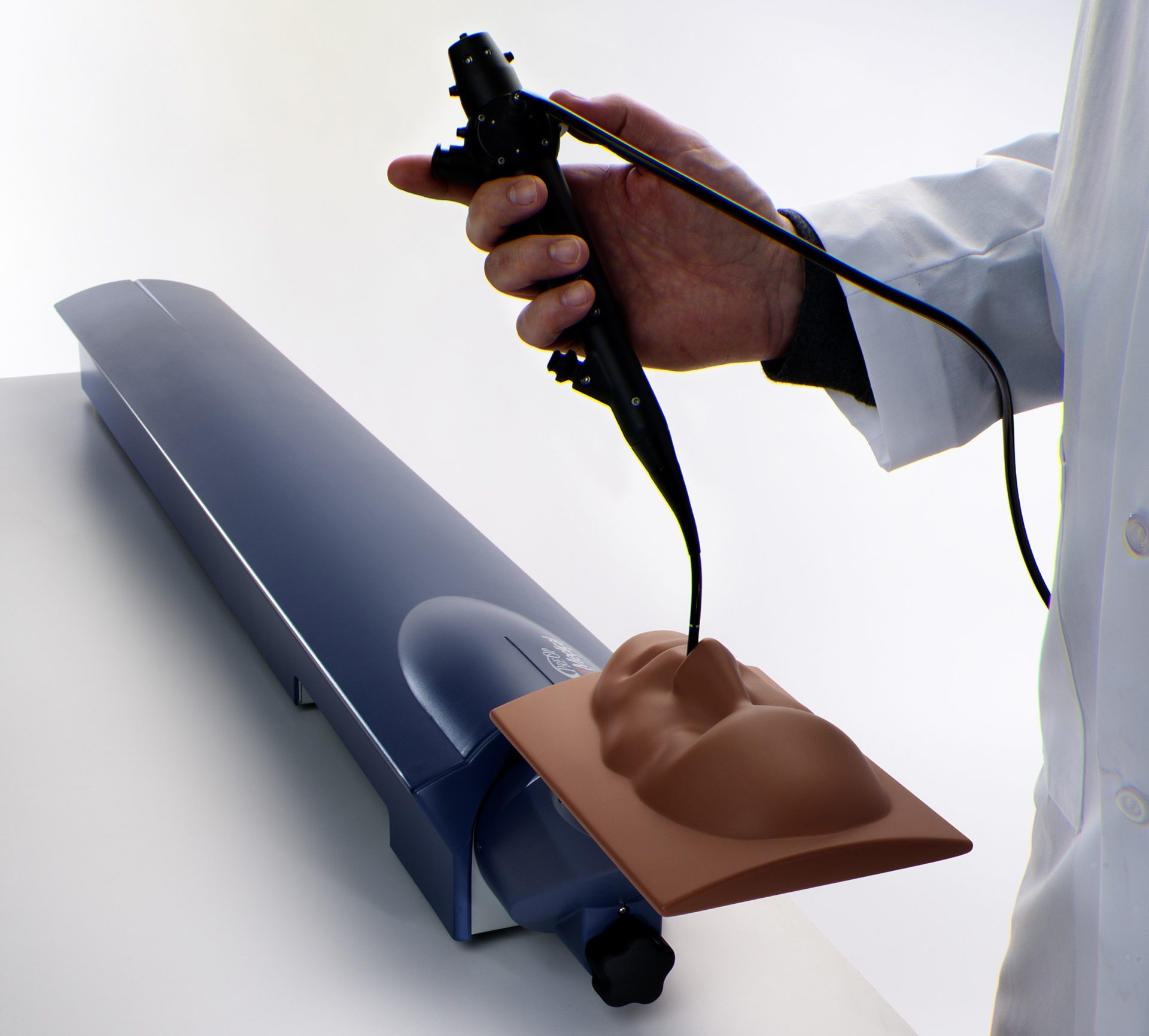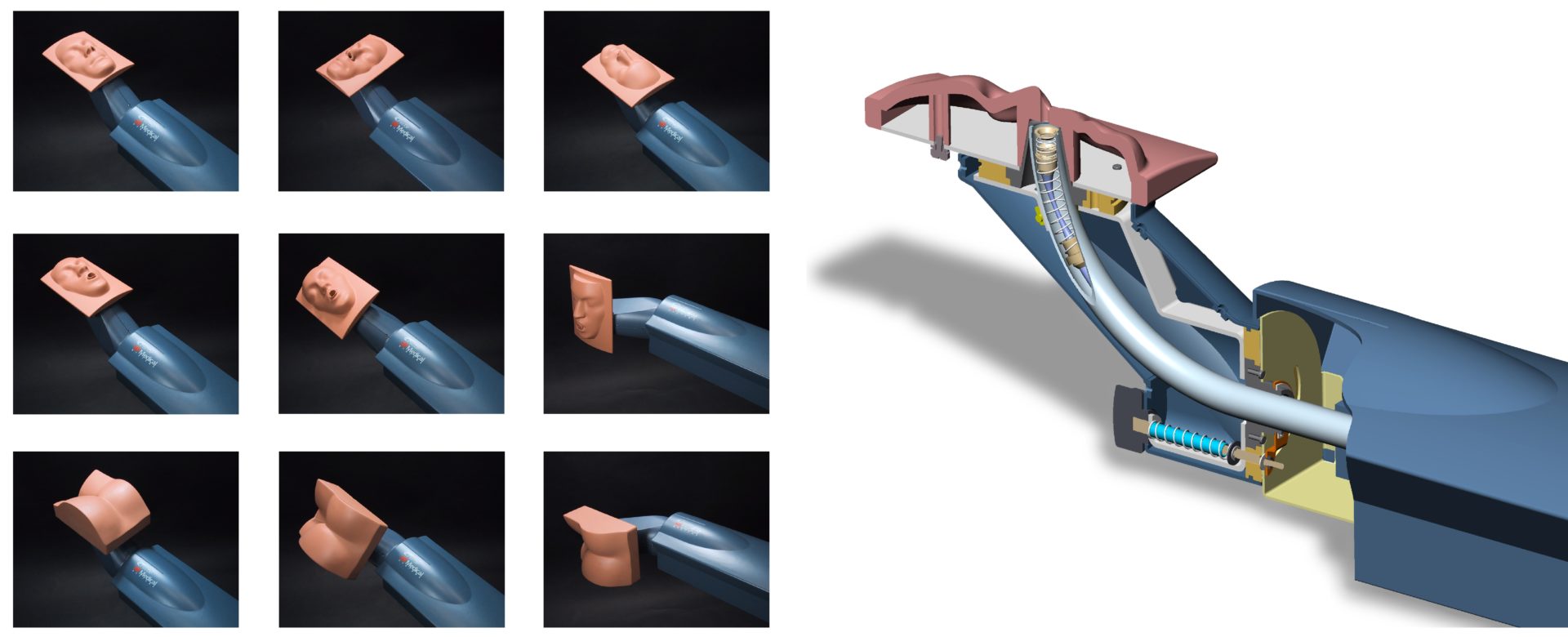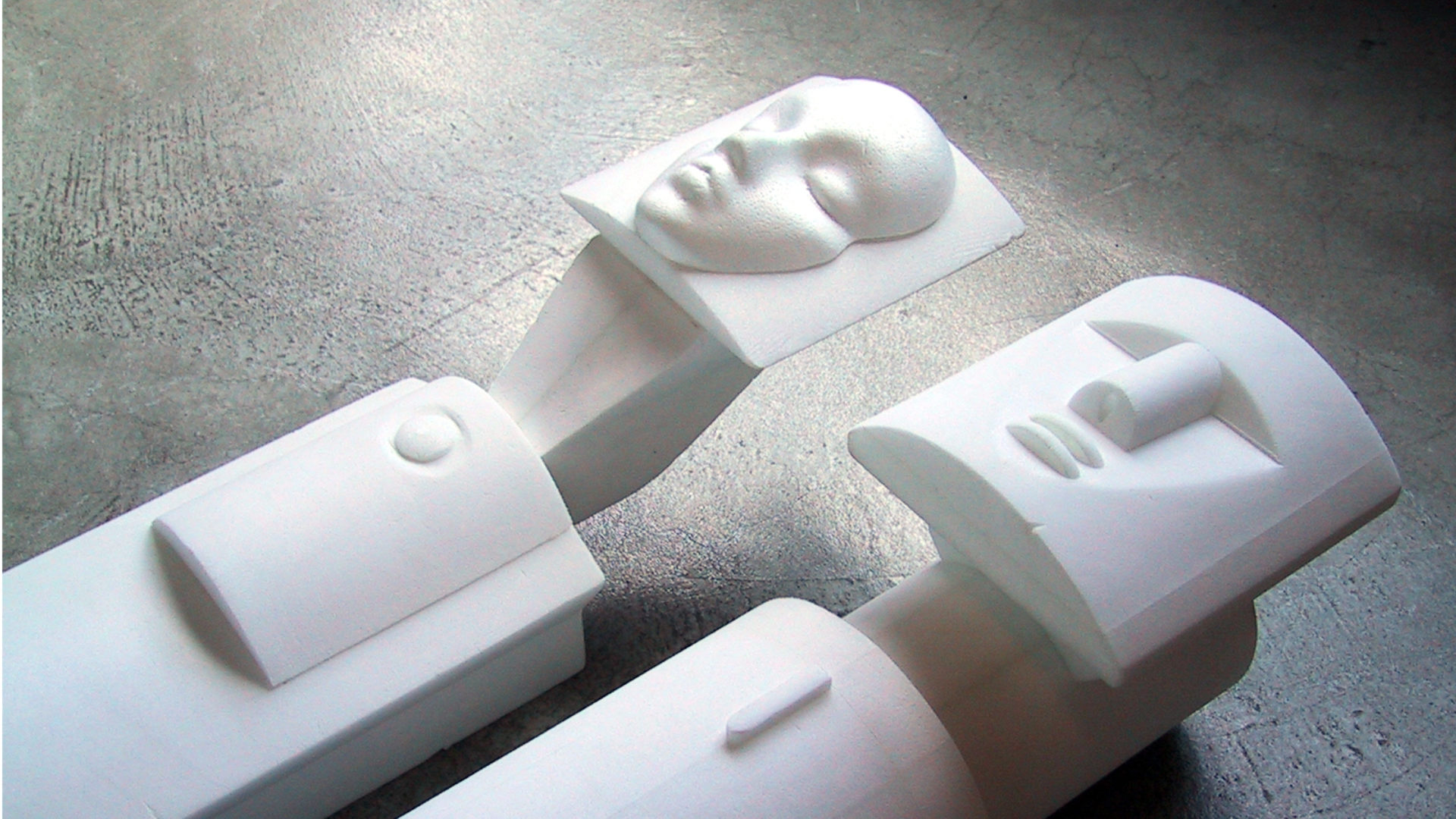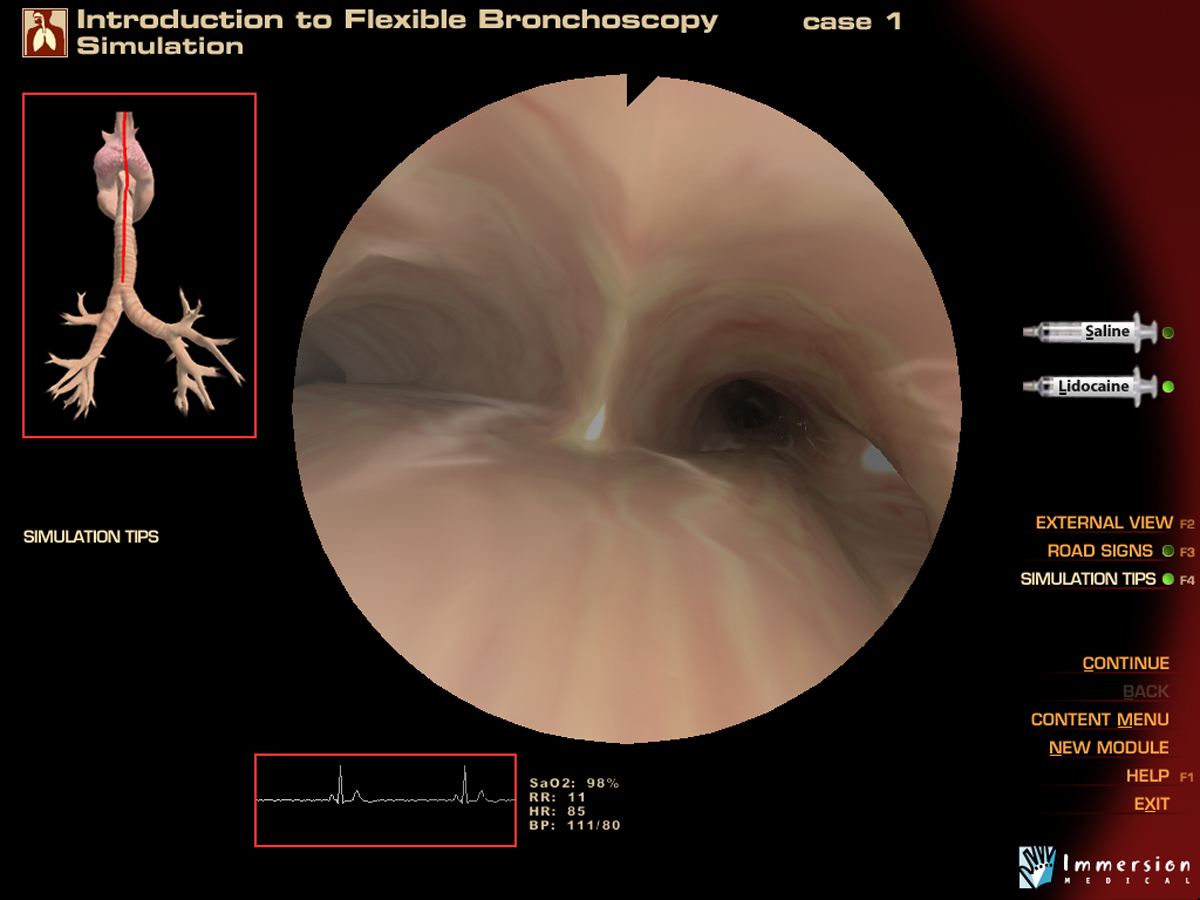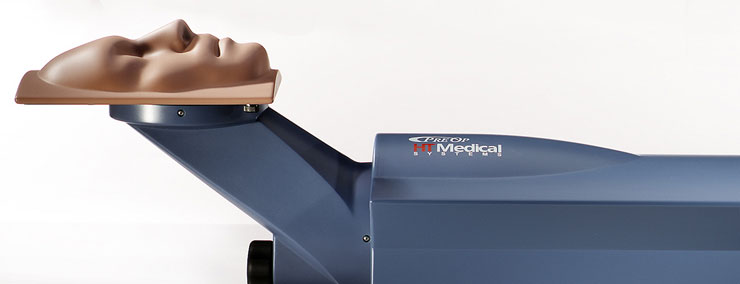Surgeons use these simulators to practice on virtual patients before proceeding to humans. To begin, a proxy endoscope is inserted into a life-like anatomic figure while VR software and robotic feedback provide sensory input. The innovative use of real-looking body parts rather than a full-size mannequin keeps the unit compact and maneuverable: ideal for small training rooms. To simulate different patient positions, ION engineered an adjustable platform to tilt or rotate a “body part” as needed for a specific procedure. Because this expensive instrument has such a small market, the brief necessitated modest tooling. A revolutionary product when first introduced, it became the standard for endoscopy simulation.
